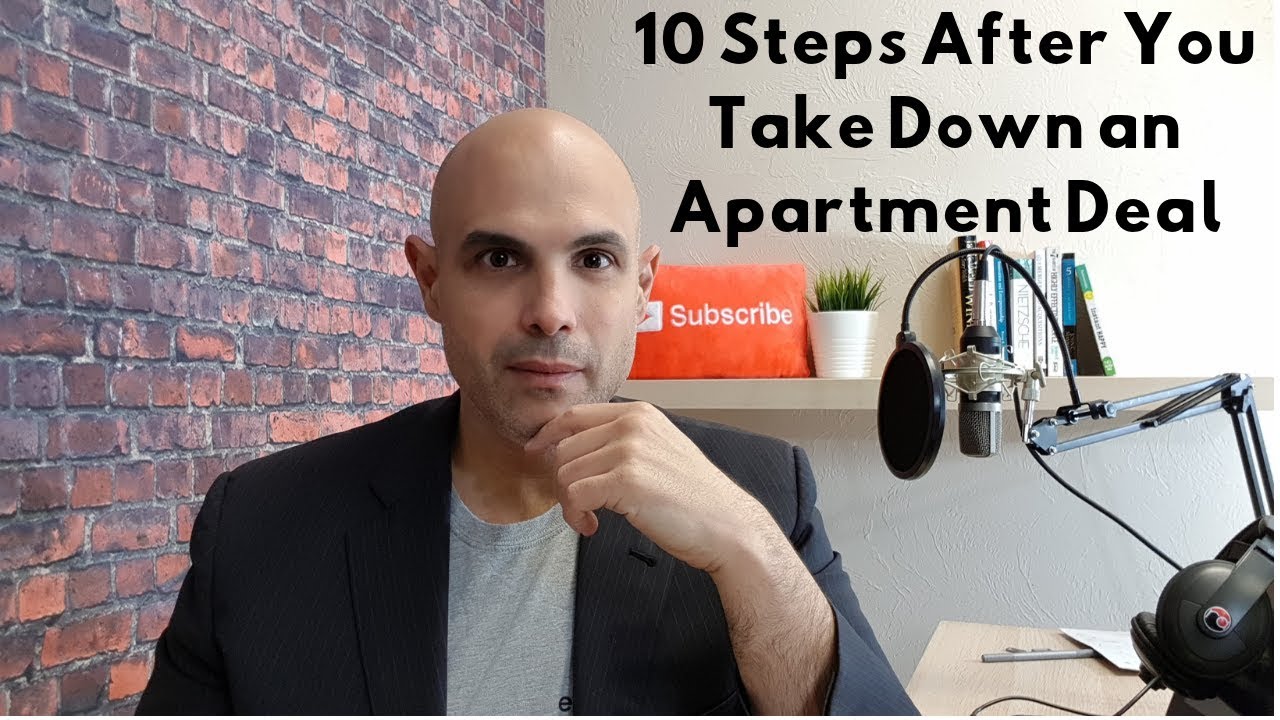Premium Only Content

10 Steps After You Take Down an Apartment Deal
Closing on a new deal is very exciting! But now that you closed, the work begins on ramping up your vision of why you bought it. On-boarding the property can be a challenge if you do not prepare for it upfront. So here are the 10 steps you need to do once you take down an apartment deal.
Step 1 - Initiate your business plan
Your responsibility is to initiate and put into place the plan you outlined in your proposal to your investors. During due diligence – well before you purchased the property – you should have put together a pro forma for what you plan on doing once you gain control of the deal. You need to put that outline into a budget to calculate the specifics of what you will repair, improve and upgrade. You can also determine what the upgrades will yield in terms of rent bumps compared to comps in the area. Make certain that your property management company can get behind the numbers as they will be executing on the increases and they need to know what your targets are.
If the management company gets behind your plan and they are certain they can execute, it is on you as the syndicator to make sure you execute the plan and not blow the budget. Your management company should provide you access to the reporting system, so you can track how your income and expenses are going and that it stays to budget.
Step 2 - Let your investors know the deal is closed
While you are working up to the close, you should be maintaining communication with your investors on how the deal is progressing. There are usually hiccups, but by maintaining communication with your investors, they will feel like they are part of the process.
After you close, you need to send out the congratulatory email indicating the deal is done. Aside from any inside scoops of the close itself (good or bad) you are also setting the tone for how often they can expect communications and payments from the property. The email will outline that you will send monthly notifications for the first 6 months while you stabilize the property then it will go to a quarterly email. With that quarterly email, you should have the financial statement and quarterly rent roll. Aside from pictures of improvements to the property, you should include links to news articles that show positive changes to the local market the property is located in.
You will also want to include details regarding taxes, distribution payments and other information the investor will welcome as it related to the return they are expecting.
Step 3 - Setup a weekly KPI review
Schedule a weekly call with your property manager to go over the properties KPIs (Key Performance Indicators). The KPIs you want to track are things like income, delinquencies, expenses and moveouts. You will also want to know where the management company is with vacancies, the number of rent ready units, occupancy and move -outs. All these KPIs must be reviewed on a regular basis so there are no surprises.
Step 4 - Handle Investor Distributions
You may have a clause in your agreement with your investors that you will distribute after the property is stabilized. This is typically 6 months, but it depends on what you and your team decided. Regardless, on quarterly basis, you will need to send out distributions to your investors. It is during the planning phase where you decide who in your organization will handle distributions. You will want your CPA to provide you with what investors get what amount, but I recommend that you personally handle the mailing or ACH of the payment along with a “thank you” note. It adds a nice touch for the investor.
Step 5 - Maintain Ongoing Investor Communication
Every month, you need to update your investors on the regular progress of the property. You will want to email occupancy numbers, renovation updates, any major capital expenses, and any special events you plan on holding for the community.
Like I mentioned previously, you want to report financials on a quarterly basis and their tax documentation on an annual basis as well.
Step 6 - Managing Renovations
If you bought the property with a bridge loan to cover renovations, you will most certainly be in regular contact with the lender while you make the improvements. Typically, they give you draws to pay for the repairs. For instance, if you needed to get a $60,000 roofing job and it is split into 3 tranches, you will need to get the bank to send you each of the tranches as the project hits the milestones. They will also send a representative after the final payment to make sure the work was completed.
If you are using investor money for the renovation, you won’t need to get bank approval for each tranche. However, you will still want to report how you are progressing with the project, so your investors know that the improvements were made.
-
 2:06
2:06
KSHB
4 years agoWaldo Heights resident's apartment ransacked after fire
71 -
 0:30
0:30
KTNV
4 years agoJerry Falwell Junior steps down after sex scandal
97 -
 1:19
1:19
KTNV
4 years agoSteps to take if exposed to COVID after the holidays
156 -
 2:04
2:04
WXYZ
4 years ago3 dead after Pontiac apartment shooting
579 -
 1:31
1:31
WXYZ
4 years ago3 dead after Pontiac apartment shooting
426 -
 0:43
0:43
PatMunson
4 years ago $0.01 earnedFirst time down steps
871 -
 18:47
18:47
2nd Amendment & Thin Blue Line TV UNCENSORED
4 years agoPolice Take Down Suspect After Night Pursuit
24.9K -
 1:43
1:43
WMAR
4 years agoTwo men injured after shooting outside of Essex apartment complex
10 -
 0:22
0:22
KTNV
4 years agoOne dead after shooting at Las Vegas apartment complex
68 -
 0:13
0:13
KTNV
4 years agoPolice: 2 dead after shooting at apartment complex near Vegas Strip
146